Article Search
SearchFuel Cell Store Blog
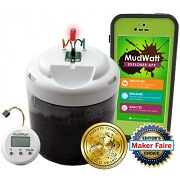
A biological fuel cell (BFC) or microbial fuel cell (MFC) is a type of fuel cell that converts biochemical energy into electrical energy. Like other types of fuel cells, a biological fuel cell consists of an anode, a cathode, and a membrane that conducts ions. In the anode compartment, fuel is oxidized by microorganisms, and the result is...
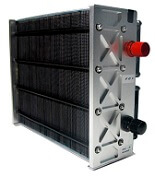
The first step in building a fuel cell is to determine the power requirements needed to power the particular device or application. Fuel cells can be used to power anything including phones, laptops, automobiles, buses, houses, businesses and even space shuttles! A single fuel cell can be designed to achieve any current required for a particular application by merely increasing or decreasing the size of the...
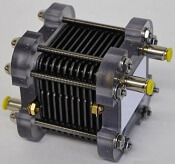
Fuel cells with polymer electrolyte membranes are appealing because of their low-temperature operation and relatively simple construction. The polymer electrolyte membrane (PEM) fuel cell consists of two catalyst electrodes (the anode and cathode) separated by polymer electrolyte. Gaseous fuels are fed continuously to the anode (negative electrode), while...
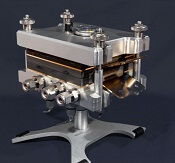
Fuel cells produce electricity from reactants such as oxygen and hydrogen -- although other fuels besides hydrogen can be used. The electrochemical reaction produces water and heat as byproducts. Fuel cells are much more efficient than the internal combustion engine because they provide more...
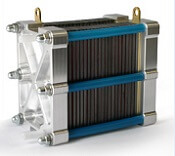
There is an acute need for the development of long-lasting, efficient and portable power sources for further technology improvement in automobiles, commercial electronics devices, military and stationary applications. These systems all require the power source to be energy-efficient, and able to operate for long periods of time without...
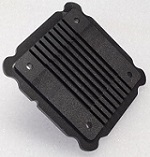
Low-temperature fuel cells have historically used CNC-machined graphite as bipolar plates. Graphite’s high-cost, high-permeability, and precise machining processes have presented difficulties for the large-scale market. Due to this, many other materials have been investigated, including carbon composite materials and...
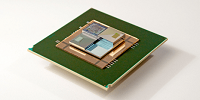
A lot of work has been devoted to the development of long-lasting, efficient and portable, power sources for further technology improvements in commercial electronics devices, medical diagnostic equipment, mobile communication and military applications. These systems all require...

Electricity for residential and business use can be produced using a combination of wind, solar, and hydrogen fuel cells. There also needs to be cooperation between corporations, utility companies, and individuals to successfully transition to a renewable energy economy. Corporations will have to manufacture...

Despite the recent negative publicity surrounding fossil fuels, crude oil, and natural gas have been beneficial for the growth of the modern world. It has allowed us to have life after dark, transport goods all over the world, and enabled technology to advance. However, the use of fossil fuels has also resulted in...

If you look at any basic fuel cell diagram, you can see that the fuel cell generates electrons. In the scientific or engineering circles, these electrons have many names, but a common term is “charge transport.” Charge transport is the movement of charges from the electrode (where they are produced) to the...
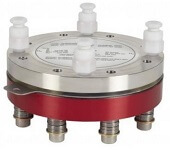
Electrolyzers use electricity to break water into hydrogen and oxygen. The electrolysis of water occurs through an electrochemical reaction that does not require external components or moving parts. It is very reliable and can produce ultra-pure hydrogen (> 99.999%) in a non-polluting manner when...
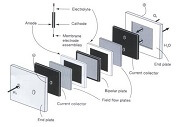
Most people wouldn’t think that much thought needs to be put into fuel cell components such as fuel cell gaskets, spacers, and end plates, however, every part of the fuel cell stack requires careful consideration. Incorrect fuel cell gaskets and end plates can lead to gas leaks and insufficient fuel cell stack...

In a previous blog post, we described bipolar plates and the associated materials for low-temperature fuel cells. The materials previously described are selected for fuel cell stacks at or slightly above room-temperature -- which means that the materials are chemically compatible with the stack between 0 – 140 °C. The fuel cells that operate at higher temperatures require...
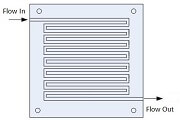
In fuel cells, the flow field plates are designed to provide an adequate amount of the reactants (hydrogen and oxygen) to the gas diffusion layer (GDL) and catalyst surface while minimizing pressure drop. The most popular channel configurations for PEM fuel cells are serpentine, parallel, and...
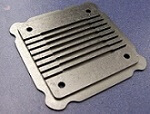
Each component of the fuel cell must be designed properly – otherwise, you run the risk of decreasing fuel cell performance. The bipolar plates are termed “bipolar” because they have flow fields on both sides. This design is very convenient when you have membrane electrode assemblies (MEAs) on both sides. In a fuel cell with a...








